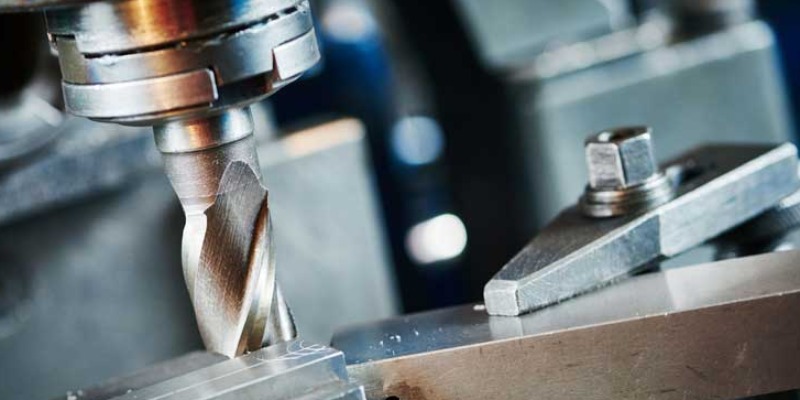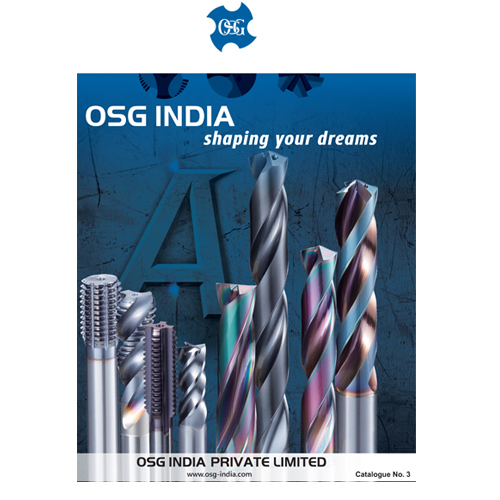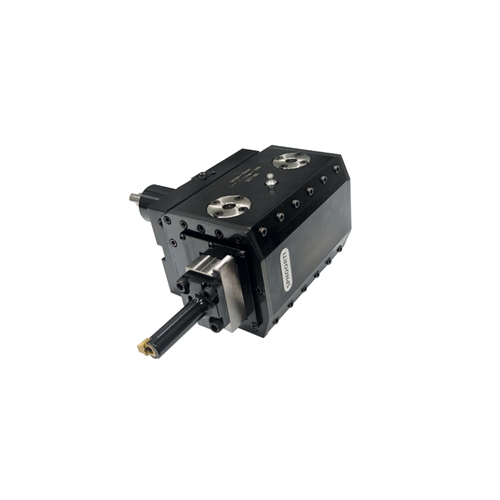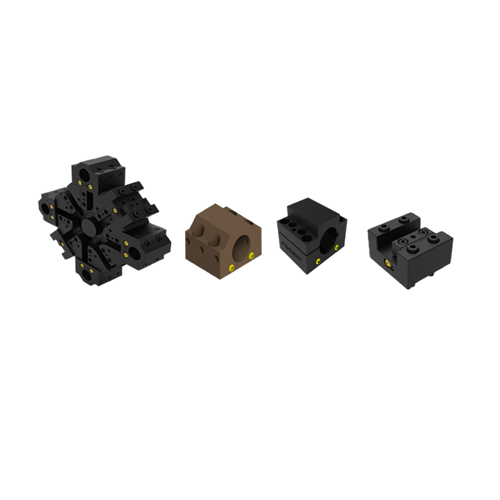Schedule a Call Back
German machine tool industry takes off in 2022 after the pandemic
 Industry News
Industry News- Mar 26,22

Since last year, German machine tools industry has been experiencing a strong upswing, which is broadly based in terms of markets and customer industries. A production increase of 14% is forecast for 2022. "The machine tool industry has a good chance of a successful 2022," said Franz-Xaver Bernhard, Chairman of the VDW (German Machine Tool Builders' Association).
Bernhard explained, "The optimism for 2022 is based on the excellent development of demand since the middle of last year.†He added that it shows the large pent-up demand for investments worldwide, which is gladly met with machine tools made in Germany. Order intake rose by a total of 58% in 2021. The strong driver was abroad with an increase of 62%. Domestic orders also grew strongly by more than half.
Of the foreign markets, Europeans were ahead, according to preliminary VDW figures. They increased their orders by 90%, followed by America with an increase of 66% and Asia with an increase of 61%. China and the US remain the two largest markets and the most important customers, with high double-digit increases of 65% and 92%, respectively. In the list of the top 20, all countries saw their demand rise by at least double digits, some even by triple digits. Orders from Italy, Austria, the Czech Republic, Switzerland and India did particularly well. Italy and Austria benefited from government support.
According to forecasting partner Oxford Economics, global gross domestic product is expected to grow by 4.2% in 2022, industrial production by 4.4% and investment by 4.3%. In terms of investment growth, Europe, our largest customer, leads the triad. "We can benefit from this because the order books of many customers are well filled," Bernhard said. For Germany, some data looked even better. After weaker development in the previous year, German industry is now catching up. The two leading indicators, Ifo business climate and purchasing managers' index, are also pointing upward.
"Nevertheless, the 2022 forecast is still characterized by uncertainty," Bernhard admitted. Given the huge numbers infected with the Omikron variant, Oxford Economics fears that many people will go into self-isolation and not travel, thus inhibiting economic life. To be sure, experience shows that the economy quickly regains its footing when infection numbers fall. However, the weak start to the year is a mortgage for the overall result, he said. China's declared no-Covid strategy also makes it difficult to normalise supply chains, he added.
Recovery in 2021 faster than expected
After the deep slump in the machine tool industry caused by the 2020 pandemic, the sector bounced back with good orders last year. According to VDW estimates, it produced machines and services worth around €12.7 billion in 2021. This corresponded to growth of 4%.
Business was driven by exports, which grew by 8%, twice as fast as production. America led the foreign business with plus 13%, followed by Asia with plus 11 and Europe bringing up the rear with plus 5%. Among the ten largest markets, the Czech Republic, Italy, Mexico, China and the Netherlands posted double-digit growth. China bounced back after a sharp decline in 2020.
By contrast, domestic sales still fell by 5% due to the automotive industry's reluctance to invest. Consumption, which rose only slightly by 1%, was supported by imports, which increased by more than a tenth. Capacity utilization was 87.2% in January 2022 compared to 72.7% a year earlier. With 64,000 employees, employment in December was listed 6.1% below the previous year.
Challenges of supply bottlenecks and shortage of skilled workers
"Bottlenecks in the supply chains of electronic components and metal products were the dominant theme for the industry last year, and they continue," Bernhard reported. In the machine tool industry, they had reached nearly all manufacturers by the end of 2021, according to a survey.
In particular, the chip shortage is hitting companies twice. On the one hand, the ability to supply the important customer automotive industry is limited. On the other hand, there is a lack of chips for controllers, one of the most important components in the machine tool, but also for gateways, edge computers or drives. This delays the delivery of ordered machines.
The reasons for the chip shortage started with declining orders at the beginning of the Corona pandemic. As a result, capacities were shut down and deliveries were diverted to the consumer goods industry. Production capacity for new chip generations takes time. Cargo space is also limited by airport and port closures in China as part of the country's strict zero covid and lockdown policy. "This can escalate again at any time," Bernhard warned. For some time, higher demand for some products to hedge has put additional pressure on suppliers.
For the machine tool industry, opportunities to influence and compensate are very limited in the short term. The changeover to a new chip generation takes time, because development efforts of several man-years can quickly arise. "For the time being, the only option is to be highly creative in material procurement and to accept higher prices that may not be able to be passed on," said the VDW chairman. In the medium term, he said, it will become increasingly important to establish stable supply chains and diversify the number of suppliers in order to reduce dependencies.
Proactively strengthening the image of dual vocational training
Almost all machine tool companies see the shortage of skilled workers as similarly serious as the supply bottlenecks. According to a survey, more than two-thirds of manufacturers intend to increase their core workforce in the current year. In contrast, the number of vacancies in the mechanical engineering sector in December 2021 was about twice as high as at the end of 2020. The number of applicants for apprenticeships and the number of apprenticeship contracts concluded are also declining
The availability of skilled workers is an indispensable prerequisite for competitiveness in the highly specialized machine tool industry. "And qualified skilled workers require qualified training," Bernhard said. He called on companies and politicians alike to aggressively highlight the attractiveness of vocational training. It offers just as many opportunities as an academic career. Companies must emphasize their attractiveness and offer good training and special support, if necessary. Trainees would have to be tied to the company even after they had completed their training by offering them further training, opportunities for promotion and appropriate salary development. Politicians, for their part, must also emphasize the importance of vocational training and support industrial-technical vocational schools, which can also be a regional economic factor. In addition, they are a role model because they are often better equipped technologically than other types of schools. In order to push digitization further, he said, many more vocational schools must be granted independent budgeting that allows them to invest on their own responsibility. "Dual training is an export hit that we must not put at risk," Bernhard demanded.
Energy turnaround offers potential for the machine tool industry
With the announced energy turnaround, the restructuring of the energy industry is also coming into focus. The VDW is currently commissioning the Munich-based consulting firm Strategy Engineers to investigate the potential for the machine tool industry. The study is in the final phase.
Most major industrialized countries have developed ambitious strategies to reduce CO2 emissions. The central adjusting screw here is the energy sector, as this is where 25% of emissions currently originate. Central building blocks are the expansion of low-emission energies, electricity grid expansion and the development of a hydrogen economy. "All in all, the conversion to emission-free energy sources is a mammoth global task for which trillions of euros must be invested worldwide every year," said Bernhard.
Due to low unit volumes and long service lives, the energy economy has not been a focus for machine tool manufacturers. However, the higher investments are now leading to increasing quantities of mechanical components for wind turbines (e.g. (e.g. gearboxes, tracking systems and large bearings), combustion engines with relevance for the energy turnaround (gas turbine), comprehensive mechanical peripheral components, for example in the area of heat pumps for heating houses (generators, compressors, etc.).(generators, compressors) and, in the future, components for hydrogen production (electrolysis) and application in mobile and stationary fuel cells (fuel cell system with stack and balance-of-plant with compressors, valves, pumps, etc.).)
"How big the volume will be in each area depends on the pace of transformation," Bernhard concluded. So far, he said, there have been many declarations of intent. Now, he said, policymakers must create reliable framework conditions for the transformation so that companies can also reorient themselves if they see opportunities here.
Related Stories

Tata Technologies buys Germany’s ES-Tec Group to boost global automotive ER&D
Tata Technologies’ acquisition of ES-Tec Group for €75 mn will strengthen its engineering research & development (ER&D) in ADAS, connected driving and digital engineering while deepening ties wi..
Read more
Continental boosts sustainable tyre production with recycled cooking oil rubber
Continental is expanding renewable and recycled inputs in tyre manufacturing, including synthetic rubber from used cooking oil, circular resins, and biocircular additives, aiming for 40 per cent use..
Read more
For German machine tool builders, India is important market: Dr Markus Heering
In this interview with Rakesh Rao, Dr Markus Heering, Executive Director of German Machine Tool Builders’ Association (VDW), emphasizes on emerging industry trends and India’s growing role in th..
Read moreRelated Products

Precision Cutting Tools1
S S Trading Corporation offers a wide range of precision
cutting tools.

Slotting Head Unit for All Cnc Turn Mill Centers
Sphoorti Machine Tools Pvt Ltd offers a wide range of
slotting head unit for all CNC turn mill centers.

Slotted Tool Disc and Tool Holders
Prominent Machine Tools offers a wide range of slotted tool disc and tool holders.















